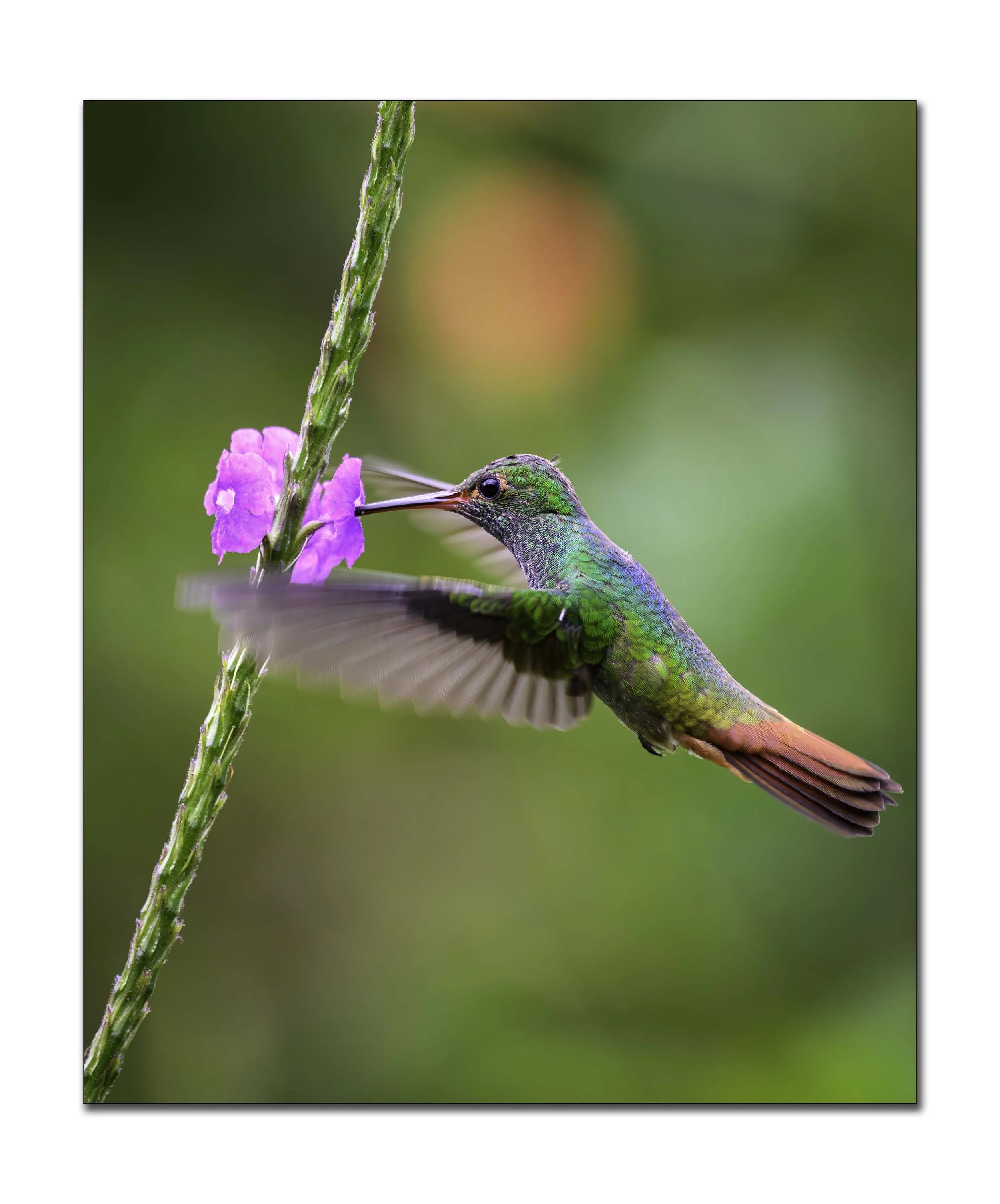Prints Store
The images will be professionally printed on pro-luster paper.
Prints Store
The images will be professionally printed on pro-luster paper.

The White-necked Jacobin (Florisuga mellivora) is one of Costa Rica’s most striking and easily recognizable hummingbirds. Often seen around forest edges, gardens, and shaded coffee farms, this species stands out with its brilliant sapphire-blue head and chest, crisp white belly, and the distinctive white band on the back of its neck—the feature that gives it its name. Males also show bold white tail feathers that flash as they dart and hover.
In Costa Rica, the White-necked Jacobin is common in the Caribbean lowlands and foothills, especially in humid rainforest zones such as Sarapiquí, Tortuguero, Arenal, and the Talamanca foothills. They are frequent visitors at feeders, where they often display energetic, spiraling flight patterns while chasing away smaller hummingbirds.
Their behavior is as flashy as their plumage: males perform dramatic, arcing flight displays, while both sexes spend much of the day darting between flowering shrubs and canopy blooms. Females look quite different from males—typically green above with mottled throats—making the species one of Costa Rica’s more visually polymorphic hummingbirds.
Overall, the White-necked Jacobin is a vibrant symbol of Costa Rica’s tropical lowland forests, delighting birdwatchers with its color, charisma, and constant activity.


The Snowcap is one of Costa Rica’s most enchanting and sought-after hummingbirds, famed for its striking contrast of colors and tiny, jewel-like form. Measuring only 6.5–7.5 cm, this diminutive species is among the smallest hummingbirds in Central America.
Adult males are unmistakable: they display a brilliant, pure white cap that shines like a drop of snow, set atop a body of deep wine-purple to iridescent reddish-violet plumage. Their tail is short and slightly rounded, often showing dark purplish tones in flight. Females, in contrast, lack the dramatic white cap. They appear mostly bronze-green above with grayish underparts, and have a tail marked with white tips—delicate but subtly distinctive.
Snowcaps inhabit premontane and Caribbean-slope foothill forests in Costa Rica, most commonly between 300 and 900 meters in elevation. They favor forest edges, clearings, and areas rich in flowering plants—especially openings filled with vervain (Stachytarpheta) and other small tubular blossoms. Though often quiet, males can be seen perching conspicuously while defending small nectar territories.
Their flight is quick, nimble, and agile, with a distinctive light bumblebee-like buzz. Like other hummingbirds, Snowcaps feed primarily on nectar, complemented by tiny insects for protein.
Due to their small size, beautiful coloration, and limited range, Snowcaps are a bucket-list species for birders visiting Costa Rica—an unforgettable highlight of the country’s glittering hummingbird diversity.


One can find the Rufous-tailed Hummingbird in a wide variety of habitats throughout Costa Rica, from lowland rainforests and gardens to coffee plantations, forest edges, and suburban backyards. Bold and territorial, it frequently chases other hummingbirds away from flowers and feeders, buzzing loudly as it defends its feeding spots.
Its diet consists mainly of nectar from flowering plants, with heliconias, vervain, and ornamental garden flowers among its favorites. It also supplements its diet with small insects, especially during nesting season.
The Rufous-tailed Hummingbird is active throughout the year in Costa Rica, and its adaptability and abundance make it one of the country’s most iconic and easily observed hummingbird species—perfect for birdwatchers seeking a close-up look at the dazzling world of tropical hummingbirds.